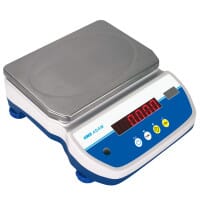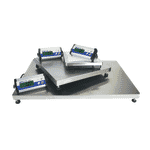
Reduce, reuse, recycle! That saying may be common in schools, but how well do your students truly get it? We suggest an activity to ensure the lesson carries some weight. Let’s begin!
The School Waste Epidemic
You might be surprised to learn that UK public schools:
- Generate up to 80,382 tonnes of waste per school year
- More than 75% of generated food waste is avoidable in both primary and secondary schools
- Only 20% of waste gets recycled even though 80% is recyclable
- Use up to 2,000 sheets of paper per school per day
- Studies estimate every classroom trash can is a quarter full of paper that could have been recycled
- Utilise high levels of single-use plastic waste
- Including utensils, water bottles, baggies and straws
These statistics are large enough that it can be hard for any student to wrap their head around. So how do you bring them down to earth? We propose an activity that combines statistics, sustainability and maths in one, turning what would be trash into a teachable moment.
Waste Weighing Activity
In this section, we’ll go over the who, what, where, why and hows of our activity, so you can take the idea from the page to the classroom with ease. Download this activity in worksheet form here.
Where?
While this activity could be altered for school-wide participation, the guidelines we’ll provide are focused on individual classrooms.
For those who teach multiple different classes each day, it may be fun to encourage friendly competition to determine which class can reduce their waste generation the most. Alternatively, a “we’re all in this together” approach can teach students that it takes a village to make change.
Who?
This is the perfect activity for both primary and secondary schools, though younger students may need assistance properly categorising their waste.
Why?
The goal for this activity is that students learn the importance of reducing waste and improving recycling rates.
By sorting and weighing their leftover food, paper and plastic, students and teachers alike can put a smaller, more personal number on how much waste is generated in their classroom on a day-to-day or weekly basis. Then, armed with these statistics, students can consciously work on:
- Reducing: Making less waste, especially food waste
- Reusing: Finding ways that paper and plastic items can still be useful
- Recycling: Recognising when paper or plastic items can’t be safely or practically reused but are made of materials accepted by your local recycling program
- Disposing Properly: Learning what constitutes true trash that can’t be either reused or recycled (dirty, greasy, coated items, Styrofoam, etc.)
What?
For this month-long activity, students will separate their waste into four different categories. Their waste is weighed regularly, the statistics tracked day by day. Though this activity is intended to last a month, everyday upkeep and maintenance are low once students begin to learn the patterns.
How?
Here we’ll explain the materials you’ll need and how you could expect to perform the activity over time.
Materials
You’ll only need six items in total:
- Four bins or boxes, clearly labelled
- Recyclable paper and cardboard
- Recyclable plastic
- Food
- Trash
- A bench weighing scale like Adam’s , or that can handle both higher weights and provide precise results. If you’re doing a school-wide activity (with larger bins) a floor scale like the , or would be more suitable.
- A method of tracking weight statistics over the course of the activity, like the one you can download for free here.
Week 1
The first week of the activity should be your reconnaissance week, when you gather data from unbiased students about how much waste they generate naturally.
Set out your bins or boxes in the classroom and have a discussion with your students about what kinds of items can and can’t go in each one. Students should not know that the bins will be weighed or that the process of categorising their waste is part of an overarching activity. Encourage students to ask themselves whether something is reusable, if it can be recycled or if it’s truly trash.
At the end of every day (or week, depending on how often the trash and recycling are collected by janitorial staff), weigh each bin on your Latitude LBX, CPWplus or Aqua ABW bench scale, after ensuring you’ve tared out the weight of the bins. You may decide to simply weigh the empty bins at the beginning of the month and subtract the weight from the total thereafter, depending on your preference.
Add individual and cumulative weights to your statistics. After a week of this, you have your baseline.
Weeks 2 - 4
The following week (week 2), share your initial findings with the class. Then, seek their help in reducing, reusing and recycling more over the course of the month. Continue weighing each bin daily and monitoring how the amount of waste is increasing or decreasing and have regular conversations about why that might be.
Suggest changes both you and your students can make to keep their waste generation in check:
- Laminate and reuse worksheets instead of printing new copies
- Only print double-sided documents
- Save one-sided sheets of paper for scratch paper, crafts or note-taking
- Using metal, reusable plastic, biodegradable or silicone containers, baggies, bottles and utensils for food use instead of single-use plastic
- Use clean plastic containers for classroom storage or organisation – like using modified water bottles as pencil holders
- Only pack food you know you’ll eat or save leftover food for the following day to avoid tossing it later
- Exchange or share unwanted and unopened food with classmates
Finale
At the end of the activity, present the total weight to students and discuss whether the weights in each bin went up or down and why! It’s time for students to reflect on the actions they took to reduce, reuse and recycle more often, and it’s an excellent opportunity to assign practice with averages, percentages, graphing, cause-and-effect and the scientific method!
For a wider viewpoint, students could take their own statistics and use them as a lens into the thousands of schools nation or worldwide – what would the world be like if all schools took the same actions?
Did you know that Southern Connecticut State University had a Weigh the Waste Week at their campus? They used an Adam GFK! Check it out here. Let’s get students thinking about school waste, one weighing activity at a time!
Questions? We’re happy to answer, contact our team!




